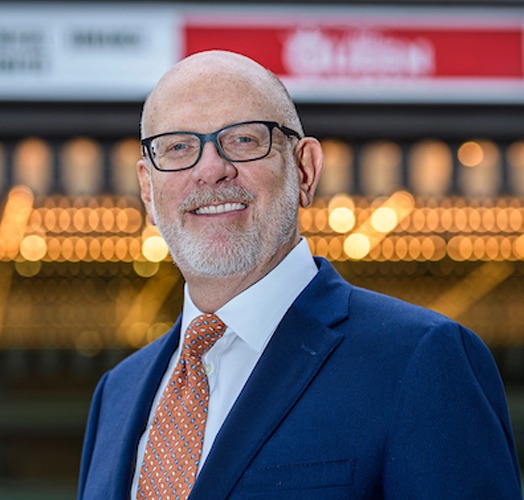Over the last few weeks as Cinnaire’s leadership team has been managing through the challenges presented almost daily with the COVID 19 crisis, I’m repeatedly drawn to the fact that we are living through an unprecedented milestone in history. It is challenging professionally and personally for each of us. It has also caused me to reflect back on another historic time of social and economic upheaval, the financial/housing crisis of 2008/9. I was a member of the Fannie Mae team during the housing market crash, and was part of the federal response to that crisis. I can’t help but draw some learnings from that experience that apply to this situation.
In 2008, I was Director of Fannie Mae’s Public Finance team. My team’s primary customer base was state and local housing finance agencies. Over the prior few years, we had built a business from approximately $500 million per year to nearly $5 billion per year. It was an incredible run, but in 2008, everything changed. The housing market collapsed, and Fannie Mae was placed into conservatorship, in which the regulator assumed control of the company. The financial markets ceased to function, and our customer base was unable to access capital through normal channels, throwing their entire business model into chaos. These HFAs could not access capital to help their single family and multifamily customers, and their financial counterparties were defaulting on obligations, putting the HFAs into an immediate and unexpected cash crisis, particularly those who used variable rate debt to fund fixed rate mortgages.
A small group of us gathered over the weekend in a conference room and put together an ambitious plan to advocate for a federal response to the crisis the HFAs were facing. At the same time, the HFA’s trade association, NCSHA, was doing the same. We were comparing notes. Within a week, a pitch was made to Fannie Mae’s CEO and NCSHA made the same pitch to leaders at the US Treasury. Within a short period of time, what became the Treasury’s HFA Initiative was being discussed within the Obama Administration. What happened after that is a blur at this point… Treasury asked Fannie and Freddie’s regulator, FHFA, to assemble a team at the agencies to develop a plan. Within a couple months, we developed a proposal, it was adopted by the Obama administration, and the resulting HFA Initiative was part of a recovery plan announced by President Obama. That was a bit surreal, but what happened after that announcement stretched me beyond what I ever anticipated.
My team had to scale up quickly to manage a program that was viewed by Fannie’s leadership as one of the primary strategies for building the company’s credibility with Treasury and the Administration. In very short order, we had to build a team, develop the systems/infrastructure to manage a national initiative, and engage a network of partners across the industry (rating agencies, investment banks, financial advisors, attorneys, etc) to support the work. At the same time, we needed to engage with the leaders of every HFA, all of whom were managing a crisis situation of their own. A handful of HFAs were running out of cash and were on the verge of defaulting on their bonds, which had never happened. One of the main factors that drove Treasury to support this initiative is that they wanted to avoid state-level defaults in the municipal bond market.
The work over the next year was intense and demanding for an extended period of time. We were constantly engaged and on call.
I would never want to relive that year, but I am thankful to have had the opportunity because I learned more in that year than in any point of my career. I worked every day with two excellent leaders, Jeff Hayward (who currently is the leader of Multifamily at Fannie Mae) and Carl Riedy, one of Cinnaire’s current board members. Both are talented leaders in their own way. Jeff is unbelievably talented at navigating through chaos and remaining calm. Carl is smart and relentless, cares about people and gets things done without burning down relationships. I also learned a great deal from some of our customers too, particularly those who were leading organizations that were on the verge of financial default on a week to week basis. Some of those executive directors did a phenomenal job, particularly Steve Spears who was the leader of CalHFA. Steve is now the CFO of Mercy Housing.
Here are some of the key lessons I learned from that experience that apply to our situation today, as we work through our own challenges and help our customers and partners.
Listen!
Good communication starts with listening closely and asking lots of questions. Understand what is happening. Understand what people (coworkers, customers, etc.) are feeling and confronting. Care about what they are feeling and confronting, because it is their reality. Listen before you speak, and certainly listen before you make decisions.
Be as clear as possible.
If you have listened well and understand what others are facing, you will be better able to communicate clearly because you will be answering questions before they are asked. Through the year+ of running Treasury’s HFA Initiative, we held countless webinars with large numbers of participants. This was a primary method of group communication. We spent a great deal of time preparing for those.
Anticipate and plan.
Even if you are getting pressed from every side, you need to take time to think, anticipate and plan. Anticipate plausible scenarios and plan for those scenarios. Manage toward what you want to achieve, but also plan for other plausible scenarios and be prepared. If you have leadership responsibility, others are expecting you to be prepared.
Have resolve and navigate.
Know that you will face a series of challenges and resolve that you will navigate through those challenges. If you’ve taken the time to think and plan for scenarios, you will be better prepared to navigate through whatever comes your way.
Find ways to recharge even if the pressure seems relentless.
You need to find some way to disengage, even for short periods of time, to recharge the batteries and get perspective. Meditate, pray, take a walk… whatever works for you. Energy is finite.
Keep the end in sight.
When you feel overwhelmed, know that these challenges will pass. Do your best… listen, think, plan, navigate, and push through. In the end, you will be stronger than you were when the challenge started.
Jim Peffley is Chief Strategy Officer at Cinnaire.
[button href=”https://cinnaire.com/team_member/james-peffley/”]Jim’s Profile[/button]

